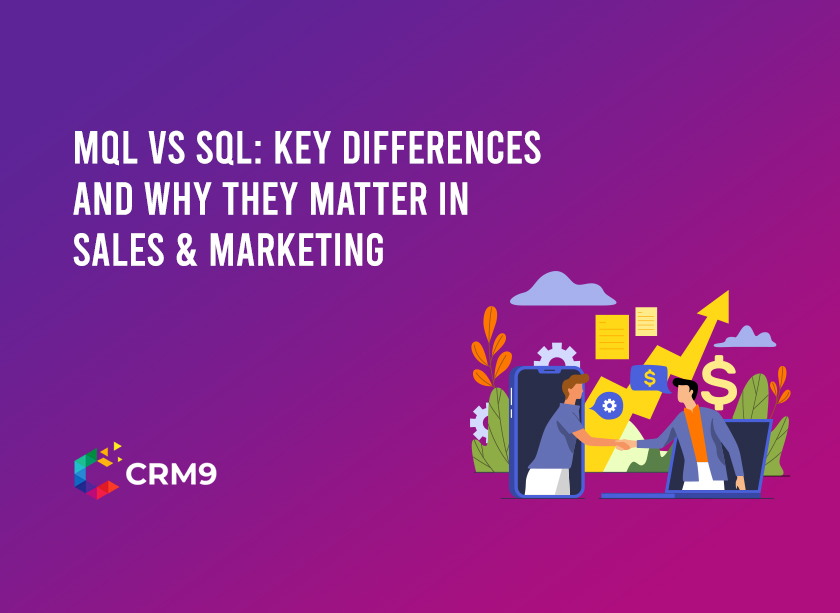To grow a business steadily, you need clear visibility of sales performance. This process starts with sales tracking. It helps companies understand customer behavior, measure team productivity, and confidently forecast future revenue. The best sales monitor ensures nothing goes to waste, helping organizations improve efficiency and achieve long-term growth.
In a competitive market, effective sales tracking helps businesses run pipelines efficiently and strengthen customer relationships. Moreover, sales tracking is easy to use because it incorporates marketing, project management as well as client management tools. Consequently, leaders are able to make evidence-based data-driven decisions on the spot.
What is Sales Tracking?
Sales operation is one of the most important practices for growing any business. In elementary terms, sales analysis implies documentation, analysis, and optimization of each of your sales processes. It helps you understand customer behavior, monitor sales activities, and ensure your team performs effectively
Sales performance tracking helps you clearly:
Understand the customer behavior: Figure out purchase behaviors, tastes, and pains.
Monitor sales activities: Follow-ups, proposals, meetings, calls, and emails.
Guarantee Individual and Team Accountability: Compare the performance of teams and individuals to establish objectives.
When using a sales tracker/CRM system, the primary objective is converting raw data on sales into actionable information. In so doing companies will be in a position to optimize their sales cycle, focus on leads with the best potential, and make decisions.
Organizations that are keen on monitoring their sales usually record:
Enhanced lead management: Through lead management, the leads do not go to waste, and they pass through the sales pipeline quickly.
Better customer retention: Better client relationships, built on understanding interactions, achieve this outcome
More revenue: Data-driven approaches will lead to higher conversion rates and more intelligent resource allocation.
Other than that, sales analysis goes beyond reporting, but also a strategic asset that helps businesses expand in a systematic and sustainable way.
Why is Sales Tracking Important for Business?
If you’re wondering why sales is important, the answer lies in the level of clarity and control it provides to a business. In the absence of the appropriate tracking the sales endeavors are likely to be in a disjointed state and the performance cannot be measured and the areas where it needs to be improved are not known. Through sales forecasting, companies have a clear picture of their operations and can tweak the strategies to ensure a consistent growth.
1. Monitor Performance
To monitor performance, sales tracking lets you see the number of deals won or lost, the amount of time that it takes to close the deal, and the salesperson or channel that works the best. Such visibility not only enhances accountability but also brings out areas of training and gaps in the processes.
2. Improve Forecasting
In addition, proper sales monitoring allows companies to forecast future sales using past patterns and current pipeline performance. Consequently, you can plan inventory, staffing, and budgets more efficiently, remaining prepared for high and low demand seasons.
3. Optimize Processes With A Team Activity Log
A team activity log ensures that all calls, meetings, and follow-ups are properly documented. It removes redundant work, facilitates collaboration, and helps managers evaluate the team’s daily productivity.
4. Strengthen Decision-Making With Management Tools
Sales analysis now goes beyond numbers by integrating project, client, and proposal management. It gives information about the performance of the proposals, the alignment of the projects with the sales targets, and the development of the relationships with the clients.
5. Ensure Financial Accuracy With Invoices & Estimates
Linking sales data to invoices and estimates ensures that financial records match actual performance. It reduces billing mistakes, improves cash flow visibility, and provides a stable basis on which the profitability can be evaluated.
In other words, sales reporting is not only the process of getting numbers, but it is the process of building a strong foundation upon sustainable growth, profitability and intelligent business decisions.
The Best Ways to Track Sales Effectively
Sales tracking, is not just a reporting process, but it assists in gaining awareness of your sales environment, opportunities in the sales environment, and making strategic decisions. In 2026-2033 Sales Tracking software market size is projected to rise to USD 2.5 billion which will rise to USD 5.2 billion at a CAGR of 9.1% between 2026 and 2033. The following are the steps to follow to track sales effectively:
Set Clear Sales Goals
Any sales reportingsystem is based on setting goals. Without clear targets, it is impossible to measure success. Goals also give your sales team direction and a focus that should be achieved.
- Types of Goals: Revenue, deals closed, acquisition of new customers, retention rates, or upsell/cross-sell rates.
- SMART Goals: SMART Goals are Specific, Measurable, Achievable, Relevant, and Time-bound in order to render goals clear and accountable.
- Tracking Progress: You can track the progress of the performance in real-time and respond to your team, adjusting strategies with the help of a dashboard.
Define Your Sales Process and Set Up Your Pipeline
An established sales process will guarantee that there is no loss of leads and that an opportunity is utilized properly.
- Stages of a Sales Pipeline: Lead generation → Lead qualification → Proposal → Negotiation → Closing → Post-sale follow-up.
- Lead Management System: Have a database of the leads and track the interactions and follow up automatically using software.
- Pipeline Visualization: CRM dashboards or Kanban boards can be used to give visual insight to a team member of the status of each deal, bottlenecks, and where effort should be focused.
Set Up Your CRM Tracking Workflow
First, set up your CRM tracking workflow, then implement CRM software as a key part of modern sales performance. This software automates repetitive tasks and keeps all client data in one place.
- Benefits of CRM:
- Machines, reminders & follow-ups.
- Monitors emails, calls, and meetings.
- Keeps all the information of the stores in a single place.
- Integration Capabilities: Link CRM to proposal management, project management, invoicing and marketing automation software to enhance operations.
- Workflow Customization: Divide workflows for your specific sales cycle, i.e., B2B, B2C, or service-based sales.
Customize Your Sales Tracking System
The needs of every business are different. Customization that ensures your sales tracker fits your company’s objectives and processes.
- Tailor Metrics: Track industry-specific KPIs, including customer lifetime value (CLV), lead conversion rate, or deal size.
- Segment Clients: Use demographics, industry, or behavior to group leads together and analyze trends and tailor sales approaches.
- Adjust for Sales Channels: When selling online and offline, make a separate consideration of each channel so that you can achieve a better understanding.
Turn Data into Actionable Insights
In addition, it is not sufficient to simply monitor sales; you must interpret the data to improve performance.
- Key Metrics to Track:
- Conversion rates
- Sales velocity (how fast deals close)
- Revenue growth by product or service
- Customer acquisition cost (CAC) vs. revenue
- Dashboards & Reports: Visual dashboards highlight trends, top performers, and underperforming areas.
- Financial Integration: Integrate the sales information with invoicing and estimates to comprehend the profitability and cash flow.
Share Insights Across Teams
Moreover, achieving sales success requires cooperation. By sharing insights, every department stays aligned with revenue goals
- Team Activity Logs: To keep the team members in line, you can keep track of who the team members interact with and who are the leads and the clients.
- Cross-Department Collaboration:
- Marketing: Align campaigns with sales performance data.
- Finance: Be able to predict revenue and control budgets.
- Operations: Use resources effectively according to the expected sales.
- Regular Reviews: Conduct weekly or monthly conferences to discuss the trends, challenges, and strategies.
Conclusion
Sales reporting is not a record-keeping activity but a business growth strategy. Finally, an appropriate sales tracker will enable tracking progress, organization of departments, and informed data-driven decisions. Whether you are working with a startupfirm or a massive corporation, a sales tracking investment will ensure that you will experience consistent growth, better allocation of resources, and a highly motivated sales staff.
Related Reads
- Sales Organization Structure: Types, Purpose & Hierarchy Explained
- What is Sales? Sales Meaning, Types, and Importance Explained (Guide)
- Sales Analysis Explained: A Complete Guide to Sales Data and Trends
- Inbound vs Outbound Sales | Difference, Meaning & Strategies Explained
- What is a Sales Plan? Process, Strategy & Templates Explained
- Inside Sales Explained: Meaning, Key Roles, and Responsibilities
- What is Sales Funnel and How to Create Sales Funnel Stages?
- What is Return on Investment (ROI) and ROI Calculation Formula?
- What is Customer Acquisition Cost and How to Calculate it?
- What is Sales Support and Why Does it Matter Most for Business Growth
Sales Tracking: FAQs
Sales tracker is used to document day-to-day activities to keep the sales teams focused and attain their goals.
Yes, with the help of a team activity log, it enhances cooperation and saves time on repetitive work.
Manual systems are acceptable enough in the case of very small teams, but digital tools can be tracked in real-time and are more accurate.
Startups can use a sales tracking system to prioritize leads, optimize resources, and scale effectively.
Absolutely. A tracker that is connected to client management and lead management shows the trends of customer contacts and buying tendencies.


